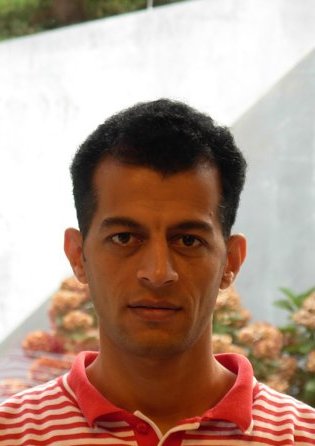Contact
Email : Mohammed.Marey@irisa.fr
Address : IRISA / INRIA Rennes
Campus Universitaire de Beaulieu
35042 Rennes cedex - France
Tel : +33 2 99 84 74 88
Fax : +33 2 99 84 71 71
Assistant : +33 2 99 84 22 52
(CÚline Gharsalli)

In 2006, I joined IRISA /INRIA-Rennes, LAGADIC group as a Ph.D student supervised by Francois Chaumette .
From 2004 to 2006, I worked as an assistant lecturer in scientific computing department, faculty of computer and information sciences, ASU, ( Ain Shams University ), Cairo, Egypt, [2003,2006].
In 2003, I had my M.Sc. degrees in scientific computing from department of scientific computing, faculty of computers and information sciences, ASU. The aim of my work was to estimate numerically the values of stability and control derivatives for different aircraft configurations,[2000-2003].
In 2000, I finished the premaster studies in the faculty of computer and information sciences, [1999-2000].
In 1999, I finished the complementary studies in the faculty of computer and information sciences, [1998-1999].
From 1997 to 1998, I was in the faculty of science as a research student, [1997-1998].
In 1997, I had my B.Sc. degrees in pure math and computer sciences from department of mathematics, faculty of science, ASU, [1993-1997].
New First Order Control Laws For Visual Servoing:
We analyzed and compared five image based visual servoing control laws. Three of them are classical while two new ones are proposed. The first new control law is based on a behavior controller to adjust the movement of the camera. It can also be used to switch between the classical methods. The second control law is designed to try to obtain the global stability of the system. An analytical study of all control schemes when translational motion along and rotational motion around the optical axis is also presented. Finally, simulation and experimental results show that the new control law with a behavior controller has a wider range of success than the other control schemes and can be used to avoid local minima and singularities.
New Second Order Control Laws for Visual Servoing:
Image-based visual servoing has been found to give satisfactory accurate and robust results. However, singularity and local minima may appear causing stability and convergence problems. We present new control schemes based on using Taylor series -simillar to Halley?s method- but to obtain the error approximation of second order as a temptative to obtain a robust system even when the desired configuration is singular. The new control scheme use the first and the second order derivatives of the error to be regulated to zero. Hessian matrices of an image point are thus determined to be used in the control schemes. Preliminary experimental results obtained on a 6 dof eye-in-hand system shows that a more accurate positioning can be obtained compared with classical methods.
New Kalman-Filter-Based Method for Pose Estimation in Visual Servoing:
The problem of estimating position and orientation (pose) of an object in real time constitutes an important issue for vision-based control of robots. Many vision-based pose-estimation schemes in robot control rely on an extended Kalman filter (EKF) that requires tuning of filter parameters. To obtain satisfactory results, EKF-based techniques rely on "known" noise statistics, initial object pose, and sufficiently high sampling rates for good approximation of measurement-function linearization. Deviations from such assumptions usually lead to degraded pose estimation during visual servoing. A new algorithm, namely iterative adaptive EKF (IAEKF), is proposed by integrating mechanisms for noise adaptation and iterative-measurement linearization. The experimental results are provided to demonstrate the superiority of IAEKF in dealing with erroneous a priori statistics, poor pose initialization, variations in the sampling rate, and trajectory dynamics.
New Large Projection Operator for the Redundancy Framework:
We propose a new projection operator for the redundancy framework based on a task function defined as the norm of the usual error. This projection operator allows performing secondary tasks even when the main task is full rank. To ensure the convergence of the system, a switching strategy is then defined to switch from the new projection operator to the classical one before the norm of the total error reaches zero. An adaptive gain is also defined to slow down the convergence of the main task. It allows the secondary tasks to be active for longer. The experimental results obtained show the agreement with the analytical study and demonstrate the effectiveness of the proposed projection operator with respect to the classical one.
New Strategies for Avoiding Robot Joint Limits:
We present a new redundancy-based strategy for avoiding joint limits of a robot arm. This strategy is based on defining three functions for each joint: an activation function; an adaptive gain function; and a tuning function. These functions allow determining automatically the required sign and the suitable magnitude for the avoidance process at each joint. The problem of adding an additional task with the main task and the avoidance process is also considered and solved. As for the redundancy framework, a new large projection operator based on the norm of the usual error is used to enlarge the redundancy domain for applying our proposed avoidance strategy. The experimental results obtained on a 6 dof robot arm in eye-in hand visual servoing show that the new avoidance strategy gives smooth joint avoidance behavior without any tuning step. Using the new projection operator allows a significant improvement of the joint avoidance process, especially in the case of a full rank task function.
I am also interested in in the following topics:
Robot Manipulators.
Switching strategies for robot control.
Trajectory and Path Planning.
Computational Geometry (Generalized Voronoi Diagram).
Complete list (with postscript or pdf files if available)
texte la
texte la [an error occurred while processing this directive]